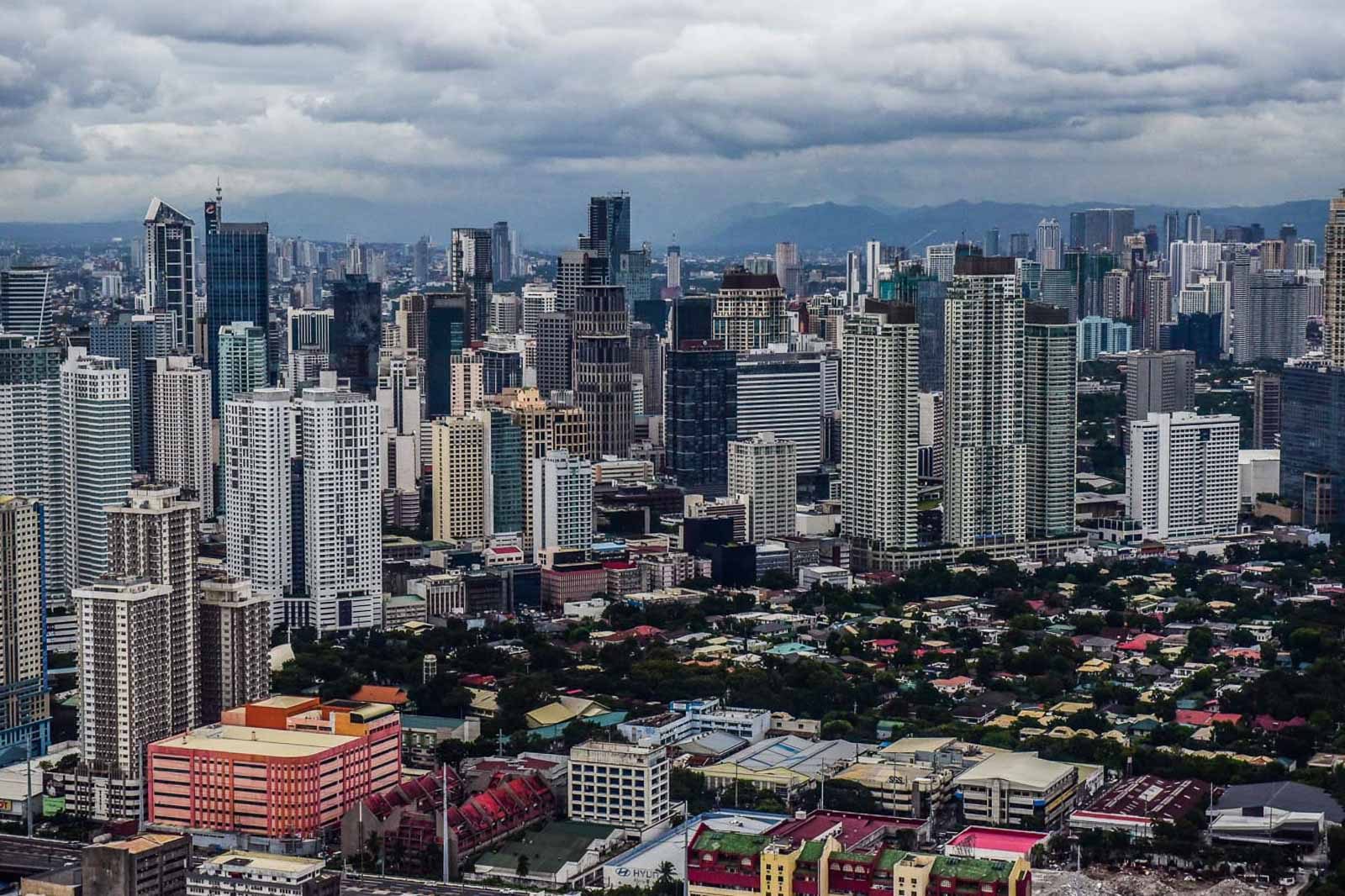SUMMARY
This is AI generated summarization, which may have errors. For context, always refer to the full article.

MANILA, Philippines – The Philippines’ gross domestic product (GDP) growth fell to 5.6% in 2023 – below the government target of 6% to 7%.
The full-year GDP growth for 2023 is much lower than the 7.6% notched in 2022, which made the Philippines the fastest-growing economy in Southeast Asia that year.
The Philippine Statistics Authority also reported on Wednesday, January 31, that fourth quarter growth for 2023 was at 5.6%. In the same quarter in 2022, growth reached 7.1%.
The country’s GDP growth of 5.9% in the third quarter of 2023 had been the fastest in the region, driven by a surge in government spending that compensated for slower domestic consumption.
Despite economic growth missing the government’s target, the Philippines remains one of the best performing economies in Asia, among those that have already released their fourth-quarter figures. Here’s a rundown of the countries mentioned by National Economic and Development Authority Secretary Arsenio Balisacan:
- Vietnam – 6.7%
- Philippines – 5.6%
- China – 5.2%
- Malaysia – 3.4%
Growth for the year had to contend with rising prices as average inflation for 2023 hit 6%, far above the 2% to 4% target of the government.
In response, the Bangko Sentral ng Pilipinas has taken a hawkish stance, raising its key policy rate. But though rate hikes can be a tool to bring inflation under control, economists warned that excessive hikes could affect GDP growth as consumers and businesses find it more expensive to borrow money.
Diving deeper
Among major industries, services led growth for the full-year 2023 at 7.2%, while industry grew by 3.6% and agriculture, forestry, and fishing by 1.2%.
Similarly, services contributed the most to the 5.6% GDP figure, with it responsible for 4.4 percentage points. Industry contributed 1.1 percentage points while agriculture, forestry, and fishing contributed just 0.1 percentage points.
Meanwhile, government spending contracted by 1.8% in the fourth quarter after growing by 6.7% in the third quarter. Recall that government spending shrank by 7.1% in the second quarter as well. Because of the underspending, government expenditures grew by only 0.4%.
Government spending is a crucial component of economic growth. However, the limited growth in government spending is partly intentional, as Balisacan explained that they “decided to go for fiscal consolidation kaya (so) it was intentional na hindi mataas ‘yung growth ng government spending for 2023 (that growth in government spending for 2023 wasn’t that high) because we want to achieve fiscal consolidation, which means lowering the fiscal deficit [and] government debt.”
With regard to inflation, Balisacan said he’s also concerned about the low growth in food spending due to high food prices.
“We need to relentlessly manage elevated food prices, particularly improving the efficiency and resiliency of the agricultural food chain,” he said.
Although the economy didn’t grow as fast as the government expected it to in 2023, the Philippines’ chief economist said it has to be assessed against the backdrop of the country’s pandemic recovery.
Since shrinking by 9.5% in 2020, the Philippine economy is now 8.6% higher than pre-pandemic levels.
“As of Q4 2023, at least nakabalik na ang ekonomiya doon sa GDP ng (the economy has reached the GDP level of) 2019,” Balisacan said. “We practically lost three years of economic growth.”
A missed target
The economy had to grow at least 7.2% in the fourth quarter to hit the low end of the 6% to 7% target set by President Ferdinand Marcos Jr.’s economic managers, according to the Department of Finance (DOF).
Back in November when the third-quarter figure was released, the DOF remained firm that the country would end the year close to its growth targets.
“We are confident that the country will post a full-year economic growth that is close to the low end of the DBCC’s (Development Budget Coordination Committee) growth assumptions of 6% to 7% for 2023 as inflation eases, labor market conditions remain strong, and consumer spending increases, particularly during the holiday season,” said then-finance secretary Benjamin Diokno, who has since been replaced by Ralph Recto.
Earlier, the Asian Development Bank also lowered its 2023 GDP growth forecast for the Philippines to 5.7%, which is below the government target, citing inflation worries.
First Metro Investment Corporation also expected the economy to fall below target in 2023, forecasting a 5.5% GDP growth rate. However, looking ahead, FMIC predicts 2024 could see stronger growth of 6%, pointing to record unemployment lows, the slowest inflation in 22 months, and strong infrastructure spending.
For 2024, the economic team targets GDP to grow 6.5% to 7.5%. – Rappler.com
Add a comment
How does this make you feel?
![[EDITORIAL] Apat na taon na lang Ginoong Marcos, ‘di na puwede ang papetiks-petiks](https://www.rappler.com/tachyon/2024/07/animated-bongbong-marcos-2024-sona-day-carousel.jpg?resize=257%2C257&crop=280px%2C0px%2C720px%2C720px)
![[In This Economy] Delulunomics: Kailan magiging upper-middle income country ang Pilipinas?](https://www.rappler.com/tachyon/2024/07/in-this-economy-upper-middle-income-country.jpg?resize=257%2C257&crop=421px%2C0px%2C1080px%2C1080px)

![[EDITORIAL] Marcos Year 2: Hilong-talilong](https://www.rappler.com/tachyon/2024/07/animated-bongbong-marcos-2nd-sona-carousel.jpg?resize=257%2C257&crop=136px%2C0px%2C720px%2C720px)
![[Newspoint] A fighting presence](https://www.rappler.com/tachyon/2024/07/thought-leaders-a-fighting-presence.jpg?resize=257%2C257&crop=441px%2C0px%2C1080px%2C1080px)
There are no comments yet. Add your comment to start the conversation.